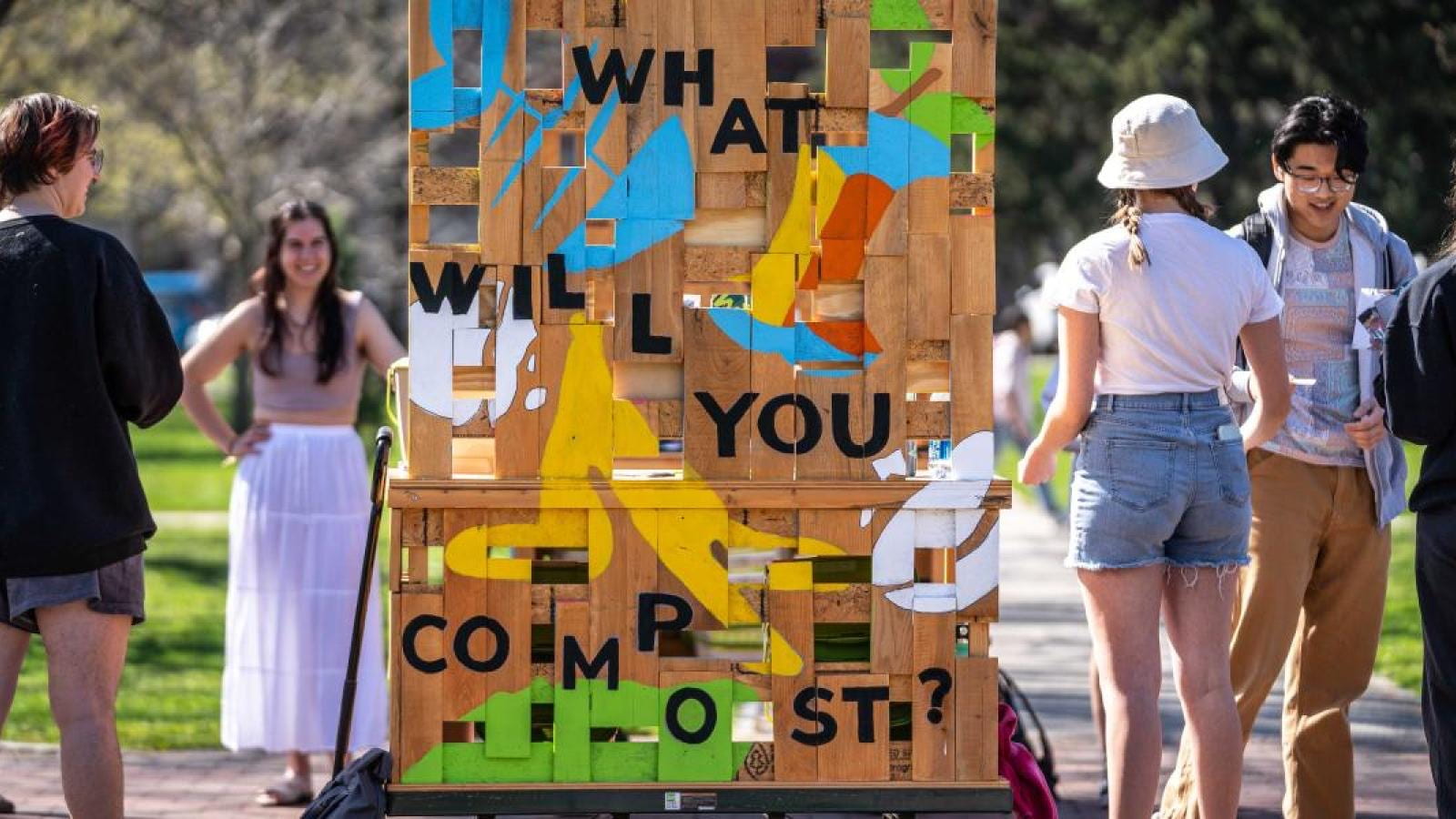
Students around an “engagement wagon.” Courtesy Brooke McKivergan.
Design students took the term “bandwagon” seriously in the spring semester when encouraging composting across campus.
Students in a design activism course spent the semester planning and constructing “engagement wagons” — interactive, mobile wagons made of recycled material — to prompt conversations on sustainability and campus composting programs, Susan Melsop, professor of design and the course’s instructor, said. The students wheeled the wagons around campus in April.
“My students spoke largely to other students in this peer-to-peer engagement about behavioral changes around sustainability issues, and then specifically about what Ohio State is trying to do,” Melsop said.
Students in the course learned about composting and regenerative agriculture — restoring damaged soil — to create the carts and accompanying informational booklets, Melsop said. The pamphlets included details on what composting is, how to do it and its environmental importance.
“We lure [students] in with the visual aesthetics,” Melsop said. “And then we really quickly engaged them with information about composting and the ‘how to’ with the zine that the students made.”
The project was in partnership with Ohio State’s Sustainability Institute and Facilities Operations and Development. In addition to providing information on composting, Melsop said students in the course encouraged others to sign up for Ohio State’s composting programs.
“We ended up getting nearly 50 more students to sign up with the composting bins,” Melsop said.
According to Facilities Operations and Development’s website, students can apply for a composting bin for their on- or off-campus residences to collect organic materials such as food scraps and compostable bags. Students can empty full bins at several on-campus locations.
Mary Leciejewski, Facilities Operations and Development’s zero waste manager, said Ohio State is working to grow its composting initiatives, collecting nearly 600 tons of organic waste this year.
“Compostable materials make up about a third of the material that we send to landfill, which then creates methane gas, which is a really potent greenhouse gas,” Leciejewski said. “And so we’ve been trying to expand this year — our composting programs and our food scraps collection.”
Matthew Griffin, program manager of cocurricular and community initiatives for the Sustainability Institute, said partnering with students helps the university reach its sustainability goals.
“It’s always really exciting when we have design students coming in with their skills, working with engineering students, working with environmental science students,” Griffin said. “There’s a lot of power in getting new perspectives and new skill sets engaged in these issues.”
Melsop said the partnership demonstrated the power of design.
“Design can be an agent for change,” Melsop said. “Specifically, an agent of change around sustainability initiatives.”


